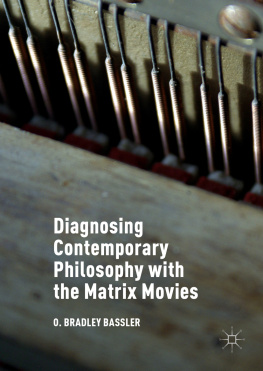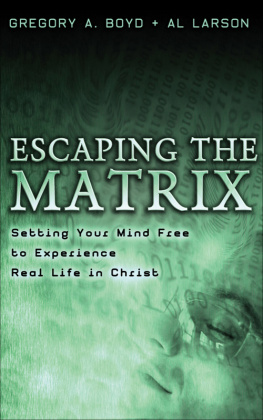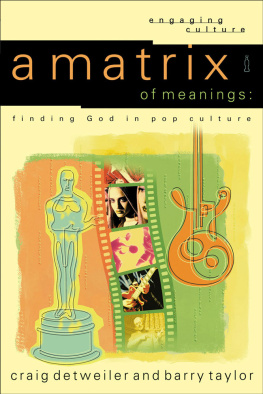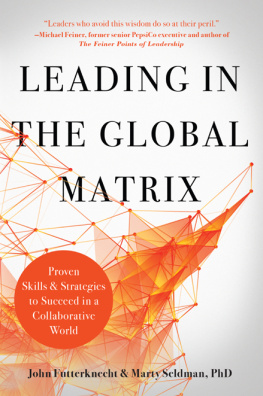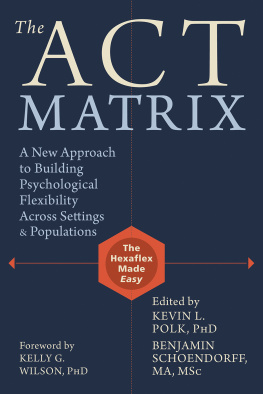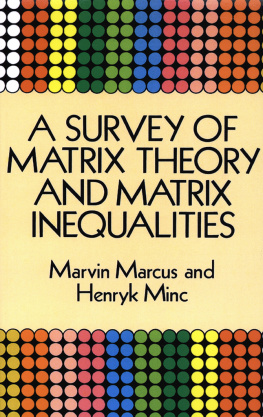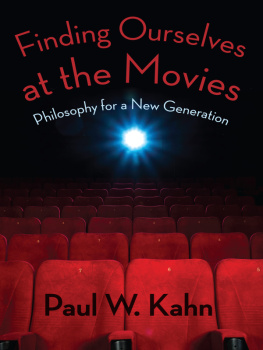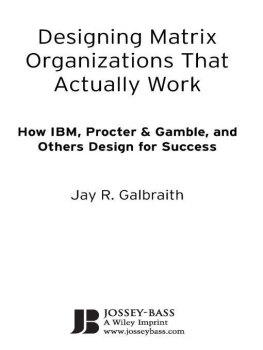What This Book Is and Isnt
This book is intended as a manifest for a larger, still outstanding project called Matrix Philosophy, which will be written according to the specifications introduced here. Hence, my shorthand for referring to the current book in the course of preparing the larger book will be to call the former the Manifest. The larger project, Matrix Philosophy, which mirrors the progressive levels presented in this Manifest, will consist of four parts, currently called An Invitation to the Parafinite, Paraphysics, Philosophical Praxis, and Philosophia Perennis.
A manifest, in addition to being a list of cargo or passengers, is a fast freight train, usually carrying perishable goods. Both definitions fit: the content of this Manifest (freight) is a manifest (roster) whose content, in turn, will lapse at the production of the completed project. In this Manifest, I conduct a diagnosis of contemporary philosophy, framed by the Matrix movies. The diagnostic work is itself philosophical, and so it yields philosophical fruit in its own right. Hence, this Manifest, oriented by its diagnostic intention, delivers a full specification for the contents of Matrix Philosophy to come. Accordingly, the diagnosis of contemporary philosophy conducted in the Manifest generates only the rudiments of the Matrix Philosophy project. Matrix Philosophy is a machine still under construction.
What Matrix Philosophy Is and Isnt: A First Descent Down the Rabbit Hole
The Matrix Philosophy project is oriented toward answering the question What is the Matrix?, which is asked in a different way and a progressively deeper form at each diagnostic level of the Manifest. Although this is a guiding question for the trilogy of Matrix movies, Matrix Philosophy itself is not a philosophy of these movies, nor is it an attempt to specify what the answer to this question is according to these movies. My project is not to give a reading of these movies, in that sense. But I draw upon them as a source of inspiration. I will, for example, be saying what I find right and wrong (helpful and unhelpful) in their approach to the Matrix, and more relevantly perhaps, what limits are imposed on a treatment of the Matrix by the sort of blockbuster Hollywood movies that comprise the Matrix trilogy. This is not intended to denigrate what these movies accomplish, however; in my view, what they achieve is indeed something rather special. In fact, my treatment here is intended to indicate how contemporary popular cultural resources can serve philosophical work. The point is simply this: the Matrix movies are about the Matrix, and so they shed light on Matrix Philosophy, but Matrix Philosophy is not about the Matrix movies. In short, the Matrix movies are an important example for Matrix Philosophy to consider. Although the movies are our constant companions in this Matrix enterprise, I give individual diagnosis of contemporary philosophy and provide my own answer to the question What is the Matrix? Part of the challenge of dealing with these movies within the context of Matrix Philosophy is that, while the movies accompany us along the way, their most interesting contribution to Matrix Philosophy occurs at a rather deep levelthat of myth. While plenty can be said about the treatment of technology in these movies, their more fundamental contribution is to the mythology they cultivate. However, this mythology is syncretic, and so it needs to be handled with care; hence, this issue is deferred to Chap. of the Manifest.
An approach to Matrix Philosophy can be organized heuristically, as a multitiered enterprise. At each level, the contemporary philosophical condition is diagnosed, with the question What is the Matrix? serving as our guide. Yet, even this progressive diagnosis cannot be comprehensive, just as a physical examination by a physician can never really be truly comprehensive. Thats because the nature of a diagnosis is simply to target specific functions by identifying symptoms of an underlying condition. It is in this sense that I refer to this work as a diagnosis. Here are the levels we will encounter:
Level 0. (Level of Cognitive Science) At the surface, we have the stratum where philosophy meets cognitive science. Here, the question is: Could the Matrix (now in the sense, or roughly in the sense, of the Matrix movies) be implemented? When the movies were first released, a philosopher wrote an article in which he gave as the answer to this question that it was not only feasible but, under certain assumptions, even overwhelmingly likely. Such optimism, we must note, is the very propaganda that keeps the cognitive science community afloat, giving it its metaphysical swooshes (Bostrom 2003). The first section of the Manifest , then, outlines why what we might call the theology of cognitive science (not cognitive science itself) is misguided. As an excursus, I consider what I call, following Edgar Wind, the problem of art and anarchy , allowing for a complementary perspective opened up by the arts. This complementary consideration serves several purposes, among them to show that there are balancing questions in the domain of the arts, but also that these balancing questions can ultimately be subsumed under the same diagnostic condition.
Level 1. (Level of Logic) A level down, but still fairly close to the surface, is the logical level. It is at this level that the debates within the philosophical community about brains-in-vats have transpired. Considering these debates allows us to diagnose the role played by appeals to logic in one canonical contemporary philosophical context: Could I really be a brain in a vat? Here, the question is not whether such a scenario is feasible but whether it is (logically) possible . It is the possibility of such a scenario that makes it logical. The underlying questions that this level of investigation inspires move us beyond the feasibility arguments of the sci-fiinspired cognitive scientist. Although I will not do so, an analogous presentation could be made about another area of discussion from another philosophical traditionone which apparently inspired the Wachowskis, the creators of the Matrix movies. This would center on concepts of simulacrum and simulation, and the canonical work here is Jean Baudrillards book. According to Baudrillard, the Wachowskis didnt really understand his book at all (Watson 2003, 162). (Since I am not providing a philosophical reading of the Matrix movies, that doesnt matter.) The similarity of the being a brain-in-a-vat question and that of simulation (in Baudrillards sense, not in the cognitive scientists sense) may be obvious enough to the reader, but if it isnt, no matter. I merely suggest that the two inquiries are parallel and that both belong at this level; further, I argue that the former belongs at this level. And neither is it my goal to do justice to or solve the brains-in-vats problem. I use it only to diagnose a particular level of Matrix Philosophy. (I am saving my philosophical strength for the heavy lifting that goes on deeper down this rabbit hole.)
At this point, the Manifest divides into two versions: the Theatrical Version and the Directors Cut. The Theatrical Version is recommended for a first reading, and so presents a quick and dirty (axiomatic) argument that takes us, in one step, from Level 1 to Level 2. In the Directors Cut, the long and arduous path between these two levels is spelled out in detail. Its a transition that occurs at what I call Level 1.5, or the Level of Transit. This Level 1.5 is sequestered in the Appendix, but I subsume a schematic description of Level 1.5 within the description of Level 2.

